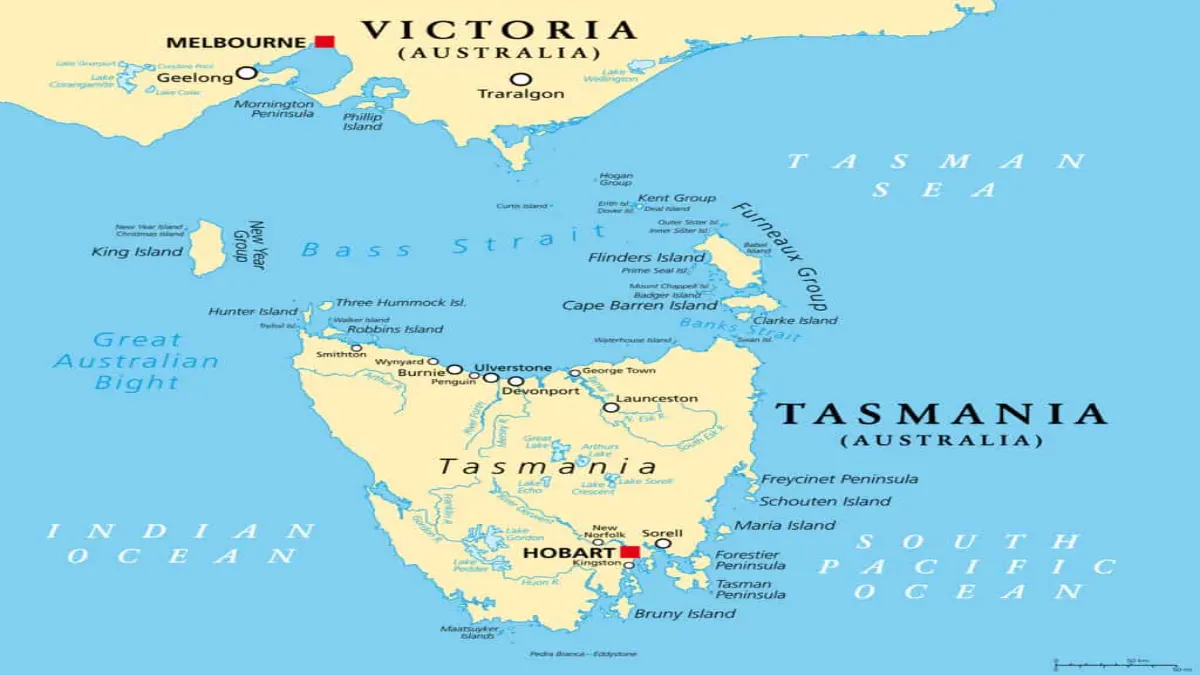
Advertisement
Tasmania, a land of rugged beauty and unique ecosystems, is an island state that lies to the south of mainland Australia. Known for its pristine landscapes, diverse wildlife, and captivating history, Tasmania is a destination that beckons travelers from around the world. In this article, we explore the geographical location of Tasmania and what makes this island state a remarkable part of the Southern Hemisphere.
- Geographical Coordinates: Tasmania is situated at approximately 42 degrees south latitude and 147 degrees east longitude. The island is separated from the Australian mainland by the Bass Strait, which is about 240 kilometers (150 miles) wide at its narrowest point.
- Isolation and Breathtaking Landscapes: One of Tasmania’s defining features is its isolation, which has led to the evolution of unique flora and fauna. The island is renowned for its diverse landscapes, including mountain ranges, dense forests, pristine beaches, and picturesque coastal cliffs. Notable landmarks like Cradle Mountain and Wineglass Bay showcase the natural beauty that has made Tasmania a global destination.
- Size and Proximity to Mainland Australia: Tasmania is the 26th-largest island in the world, covering an area of approximately 68,401 square kilometers (26,410 square miles). Despite its relatively small size compared to the Australian mainland, Tasmania holds a wealth of natural wonders within its compact boundaries.
- Bass Strait: The Bass Strait separates Tasmania from Victoria, one of Australia’s southeastern states. The strait is known for its sometimes turbulent waters, and it serves as a maritime gateway between the island and the mainland.
- Southern Hemisphere Location: As part of Australia, Tasmania is situated in the Southern Hemisphere. Its southern latitude contributes to the seasonal variations experienced on the island, with summer occurring from December to February and winter from June to August.
- Capital City: Hobart, Tasmania’s capital and largest city, is located on the southeastern coast of the island. This vibrant city is nestled between the Derwent River and the towering kunanyi/Mount Wellington, offering a unique blend of natural beauty and urban charm.
- Access and Transportation: Access to Tasmania is facilitated by air and sea. Hobart and Launceston are the major airports on the island, welcoming domestic and international flights. Ferries and catamarans also traverse the Bass Strait, connecting Tasmania with the mainland.
Tasmania’s geographical location, with its isolation, unique ecosystems, and breathtaking landscapes, sets it apart as an island state that captivates the imagination. Whether you’re drawn to its rugged wilderness, historic sites, or cultural experiences, Tasmania’s position in the Southern Hemisphere makes it a distinctive and cherished part of Australia, offering a wealth of natural wonders waiting to be explored.
